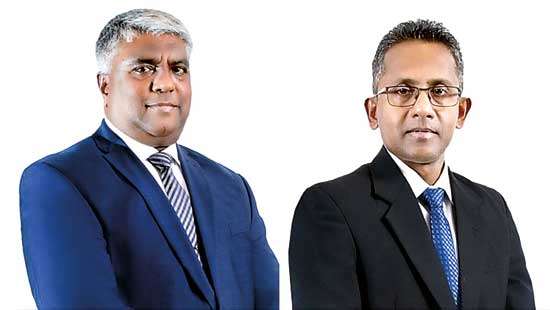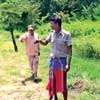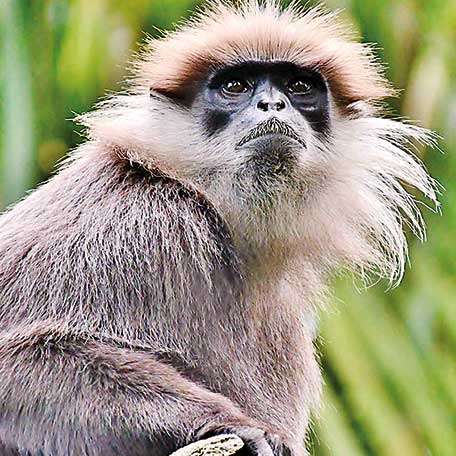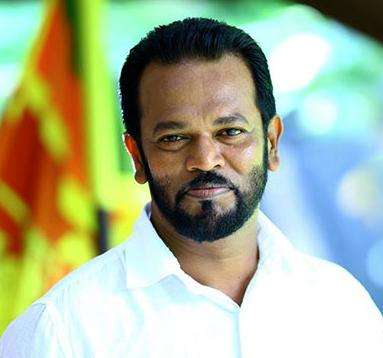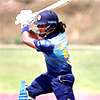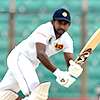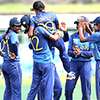By
D.B.S.Jeyaraj
“It is with pride and pleasure, Chitrakala presents to the four million Sinhalese of Ceylon, a picture in their own language for the first time.” was the special message issued by Chitrakala Movietone Ltd. The producers of of “Kadawunu Poronduwa” when it was first screened on January 21st 1947. ‘Kadawunu Poronduwa’ meaning Broken Promise in English was no ordinary film. It was the first-ever Sinhala “talkie” meaning a film where the characters on screen spoke and sang in the Sinhala language. Until then films shown in the island were in languages like English, Hindi, Urdu, Tamil or Telugu but not in Sinhala.
The evolution and growth of cinema had seen frozen images becoming soundless moving images and then having sound added. Initially films with moving images were called silent films. Western nations particularly the USA focused more on the moving images. Therefore films were generally called movies in those countries. In the Asian region particularly South Asia, the emphasis was more on sound, songs and conversation. Thus films with sound tracks were referred to as talkies. It was against this backdrop that ‘Kadawunu Poronduwa’ was welcomed and hailed as the first Sinhala talkie. The message issued by the movie producers at the first screening highlighted this aspect effectively.
The livewire of “Kadawunu Poronduwa” was BAW Jayamanne who had written the story, screenplay and dialogues for the talkie. BAW Jayamanne known popularly as Aloy Jayamanne also played the lead male role in the film. Among those who acted in the film were Rukmani Devi, Eddie Jayamanne, Gemini Kantha, Rupa Devi, Peter Peiris, Miriam Jayamanne, Hugo Fernando and Stanley Mallawarachchi.
The film that was shot in India was directed by Jyotish Sinha . The cameraman and editor were K.Prabhakar and Pakeer Saleh respectively. Music was composed by Narayana Aiyer. There were twelve songs in the film which were sung by the Minerva Singing group, Rukmani Devi, Eddie Jayamanne, Gemini Kantha, Peter Peiris, Hugo Fernando and Stanley Mallawarachchi known as the Talat Mahmood of Ceylon then. Hugo Fernando known as Hugo Master was the lyricist.
Sundaram Pillai Madhuranayagam
|
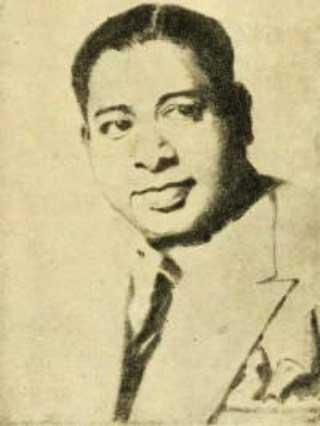
The Late S. M. Nayagam
|
| The film that was shot in India was directed by Jyotish Sinha . The cameraman and editor were K.Prabhakar and Pakeer Saleh respectively. Music was composed by Narayana Aiyer. There were twelve songs in the film which were sung by the Minerva Singing group, Rukmani Devi, Eddie Jayamanne, Gemini Kantha, Peter Peiris, Hugo Fernando and Stanley Mallawaratchi known as the Talat Mahmood of Ceylon then. Hugo Fernando known as Hugo Master was the lyricist |
The producer of the film was Sundaram Pillai Madhuranayagam generally known as S. M. Nayagam. He was the chairman/proprietor of Chitrakala Movietone Ltd on behalf of which “Kadawunu Poronduwa” was produced. S.M. Nayagam, who originally hailed from Madurai District – in what was known as the Madras presidency during British rule – was an industrialist manufacturing soaps and perfumes. He had factories in India and Sri Lanka. Nayagam set up the Swadeshi manufacturing facility in Kandana eighty years ago and marketed exotic soaps with Sandalwood and Neem/margosa fragrance.
Despite being an industrialist, it is as the pioneering producer of the first Sinhala talkie that SM Nayagam is remembered. What made a Tamil hailing from Madurai in India to produce the first Sinhala film? S.M. Nayagam himself went on record in a newspaper interview explaining why he produced the film. What Nayagam said was: “You may be wondering why on earth a Tamil person came forward to produce a Sinhala film. You may want to know the reason. My answer is very simple. I have noted that a good number of my Sinhala friends enjoy Tamil and Hindi films. I wanted to find out why do they love and appreciate those films and in the reasoning ,I came to realise that my friends were sad that they did not have films in their own language while there was a lot of resources and talent here. This was the reason that led me to do a Sinhala film using the talents of the local actors and actresses”
74 years ago ‘Kadawunu Poronduwa’ (Broken Promise) premiered at the Kingsley Theatre in Colombo on 21 January 1947. The Chief Guest was D.S. Senanayake, Minister of Agriculture and Lands under the State Council system of governance during the penultimate stages of British rule. Senanayake went on to become the first Prime Minister of independent Ceylon as Sri Lanka was known then, within a year of this premiere.The presence of Senanayake, who was also then the leader of the House, at the first screening of a film denoted the importance of the event. The making and screening of ‘Broken Promise’ was indeed of historic importance and this was duly acknowledged so by the country’s most senior Minister and future Prime Minister’s presence as Chief Guest at the first screening.
Premiere on 21 January 1947
Sinhala filmgoers of the Island did receive the first Sinhala talkie enthusiastically. Only five prints of the film were made for screening initially. The first print was used for the premiere at Kingsley Theatre on 21 January 1947. Thereafter it continued to be screened at the rate of four shows daily in the Kingsley Theatre for 127 days at a stretch.
The second print was screened on 22 January 1947 at the Gintupitiya Talkies in Colombo. This theatre was later re-named as Murugan Talkies. ‘Broken Promise’ ran for 42 days at this theatre in Colombo. The third print was screened on 23 January 1947 at the Mylan Theatre in Colombo. The film ran for 28 days at the Mylan. In addition to these three theatres, the film was also shown once daily at 10 a.m. at the New Olympia Theatre in Maradana. The same print shown at Mylan was screened in the mornings at the New Olympia. Thus ‘Kadawunu Poronduwa’ had a remarkable run in the capital city being shown simultaneously in four theatres in Colombo.
The fourth and fifth prints of the film were screened on 24 January 1947 at the Panadura Talkies Theatre and Chandra Talkies in Avissawela. ‘Kadawunu Poronduwa’ ran for 28 days at a stretch in Panadura and 35 days in Avissawela. After the screenings in these theatres ended, the film was shown in other suburban and outstation theatres like Quinlon – Nugegoda, Kelani Talkies – Kelaniya, Nadarajah – Negombo, Chandra – Moratuwa, Bharatha Talkies – Ratnapura, Imperial Talkies – Kurunegala, Modern –Badulla and Nadarajah – Trincomalee. ‘Broken Promise’ ran for several weeks at these theatres. Thereafter the film was shown in other theatres in various parts of the island. Record crowds were present for many, many weeks.
In Kandy a makeshift “tent” theatre was set up at the Bogambara grounds. Called ‘Bogambara Theatre,’ it was constructed with the sole purpose of exhibiting ‘Kadawunu Poronduwa’. According to newspaper reports of the day, huge queues had formed at 6 a.m. itself for the first show scheduled at 10 a.m. Many tough guys in Kandy town had a field day by elbowing out patrons and buying up tickets in bulk and re-selling them at ‘black market’ prices. People from various parts of Kandy and Matale District hired buses and vans to visit Kandy town in groups to see ‘Kadawunu Poronduwa’. Seeing the film became a community-oriented family event.
The film was also a smashing success at the box-office. Subsequently three additional prints were made to cater to the demand. This was followed by four more prints being made. The film though in Sinhala was screened in Jaffna and Batticaloa too. The film was intermittently screened at many cinema halls for nearly 30 months.
Succeeded With The Masses
The remarkable thing about the widespread popularity of the film was that it had succeeded with the masses despite a strongly critical Sinhala press. Most reviews of the film were negatively written in Sinhala newspapers and journals. It was criticised as being overtly “Indian” in content and form and not authentically “Sinhala”.
The well-known Sinhala film critic Jayawilal Wilegoda in reviewing the film had a pithy comment. He said that South Indian Cinema which speaks in 12 languages has added one more language – Sinhala – to their list. What Wilegoda implied of course was that ‘Kadawunu Poronduwa’ though a Sinhala film was in reality another Indian film.
Despite this negativity on the part of the Sinhala intelligentsia, the ordinary people were thrilled at the prospect of seeing a film on screen where the characters spoke dialogues and sang songs in Sinhala. In their own simple way the people grasped the significance of the first Sinhala talkie and responded positively. ‘Kadawunu Poronduwa’ being the first Sinhala talkie had struck a responsive chord and touched their hearts! In that sense a Tamil film producer had created history by making the first Sinhala talkie.
The circumstances that led to an Indian Tamil entrepreneur producing the first Sinhala feature film is by itself an interesting saga worthy of recounting in depth. I shall therefore relate the circumstances under which SM Nayagam produced “Kadawunu Poronduwa” relying to some extent on an earlier article written by me about the making of this film.
The advent of commercial cinema in the early years of the 20th century became a global phenomenon impacting on many countries. People began going in large numbers to theatres or halls screening movies and talkies.The ‘pearl of the Indian Ocean” too could not remain immune from this new form of entertainment. Ceylon or Sri Lanka though tiny when compared to its giant neighbour India began evolving into a lucrative market for commercial cinema.
The market for screening films in Sri Lanka began to develop rapidly in the twenties, thirties and forties of the 20th century. Though the films were in non-Sinhala languages, a very large number of Sinhalese, particularly in urban and semi-urban areas, began flocking to cinema halls to see films. Tamil and Hindi films were increasingly relished by Sinhala audiences. This phenomenon gave rise to the opinion that the time was ripe for producing and screening original Sinhala films without having to depend on Western or India made films.
Talkies In The Sinhala Language
The 2nd world war years (1939-1945) saw films from India and the west being extensively screened in Sri Lanka. These films in English,Tamil, Telugu,Urdu and Hindi ran successfully for lengthy periods minting money for the exhibitors. This further impelled the desire to produce a Sinhala film and potentially make more money. The rationale was that if films made in languages other than Sinhala could be lapped up by Sinhala audiences, then how much more would be the reception for talkies made in the Sinhala language.
The industrialist SM Nayagam too decided to enter the film world as a producer. He set up a company to produce films and also established a film studio for that purpose in India. The production company named Sri Murugan Navakala Ltd. had an office in Madurai town. The studio named Chitrakala Movietone was located at Thrupparankundram, about six miles away from Madurai. Before embarking on a Sinhala film producing venture, S.M. Nayagam involved himself in Tamil films. He produced his own Tamil films and also rented out floors for shooting other films at his studio .
Among the films he produced was a mythological movie ‘Kumaraguru’ released on 6 September 1946. Another Tamil film shot at the Chitrakala studio was ‘Thaai Naadu’ which was released on 15 August 1947, India’s day of Independence from the British. The film was a smashing box office hit.
Nayagam, tasting success as a producer of Tamil films in India, now began thinking of producing a Sinhala film. Initially Nayagam wanted to produce a historical film in Sinhala. He first wanted to make a film on Kannusamy Nayakkar who took on the name Sri Wickrama Rajasinghe and reigned as the last king of Kandy from 1798 to 1815. Nayagam procured a script written on the subject by D. V. Seneviratne and undertook a feasibility study. He found that the budget would be rather high to make an elaborate costume drama or period movie about Kandy’s last king. Being a shrewd businessman Nayagam was not sure whether the unexplored ‘virgin’ Sinhala film market territory could yield sufficient profits to cover the cost of production.
Nayagam then went into discussions with Sinhala dramatist Sirisena Wimalaweera. Nayagam and Wimalaweera decided to do a film on the historic character Utuwankanda Sura Saradiel (1832 -64), the legendary bandit known as the ‘Robin Hood’ of Sri Lanka. Wimalaweera wrote a screenplay about Saradiel but also wanted to direct the film. Nayagam refused saying he wanted the film to be directed by an Indian director. The brief partnership ended.
With these attempts to film a history based talkie in Sinhala ending in failure, S.M. Nayagam hit upon a novel idea. He announced a competition for film scripts to make a film in Sinhala. There was a huge response. The winner was Shanthi Kumar Seneviratne who wrote a screenplay about the romance between Prince Saliya and commoner Asokamala. The film was to be named ‘Asokamala’. Again there was a clash of wills. Shanthi Kumar wanted to direct the film himself but Nayagam was unwilling. So the move by Nayagam to film ‘Asokamala’ ended in failure.
Negombo Minerva Theatre Group
Nayagam however persisted with his efforts to produce a Sinhala film. He now had a different idea. Many Tamil dramas and folk plays had been turned into films in India. Nayagam too thought of selecting a popular Sinhala drama and making a film out of it. One of the most popular Sinhala dramas at the time was staged by the Negombo Minerva theatre group run by the Jayamanne brothers Aloy and Eddie. BAW or Aloy Jayamanne wrote a series of plays beginning with letters of the English alphabet. The first was “ A-Apparition (Avatharaya’ in Sinhala) and the second was “ B-Broken Promise”(Kadawunu Poronduwa) while the third was ‘C- Changing Fate’(Peralena Iranama’).
‘Kadawunu Poronduwa’ or ‘Broken Promise’ was then the most popular play of the Minerva group. It had been staged over 800 times in various parts of the island.SM Nayagam obtained the rights to make a film out of this play. Nayagam’s close relative Ramanathan negotiated the deal with the Jayamanne brothers. Once the rights were secured, Nayagam formed a new company- the Chitrakala Movietone Ltd. He diversified the board of directors at Chitrakala Movietone Ltd to include Sri Lankans. The board comprised S. Madhuranyagam (Chairman and Managing Director), Robert Parakrama Senanayake, Susantha de Fonseka, R.F. S de Mel, Sathiyalingam Ramanathan, V. Subramaniam and S.Savundararajan.
The Minerva theatre group artistes led by BAW Jayamanne proceeded to the South Indian city of Madurai in 1946 to shoot the film. ‘Kadawunu Poronduwa’ was filmed entirely at the Chitrakala Movietone studio in Thirupparankundram- Madurai. The studio consisted of a front office for administration, two large halls serving as studio floors to construct sets, warehouses for storage and several sheds.
The Sri Lankan artistes numbering 23 were lodged at two huge houses in Madurai town. One was for the men and the other for women. Some Indian crew members also stayed with them. They were taken daily from Madurai to the studio at Thirupparankundram in a bus and van. Some artistes thought the filming would be over in two weeks. But with rehearsals the shooting dragged on for many months. Some actors playing minor roles were able to return early after their shots were over. The pre- production, production and post-production phases took a litte over six months.
“Kadawunu Poronduwa” - “Asokamala” Race
Meanwhile there was competition to produce the first Sinhala talkie. As stated earlier the move to film Shanthi Kumar’s “Asokamala” had not been fruitful as Nayagam wanted an Indian director whereas Shanthi Kumar wanted to direct it himself. Shanthi Kumar eventually teamed up with Sir Chittampalam A. Gardiner of Ceylon Theatres as producer to direct “Asokamala”. The film was being shot at the Central Studios in Coimbatore in Madras/Tamil Nadu state. There was neck to neck race between SM Nayagam and Sir Chittampalam Gardiner to produce the first Sinhala talkie. Finally Sir Chittampalam was pipped at the post by SM Nayagam. “Kadawunu Poronduwa” released on Jan 21st while “Asokamala” was screened on April 9th 1947.
“Kadawunu Poronduwa” while creating history also earned money. It was estimated that the film made at a cost of 250,000 rupees (a princely sum those days)had a fourfold return. The highlights of the film were the comic scenes between Eddie Jayamanne and Gemini Kantha and the acting-singing performance of Rukmani Devi. Though elated by “Kadawunu Poronduwa”s success, Nayagam was in for a rude shock. His studio at Thirupparankundram was burnt down in what was suspected to be a conspiracy by some of his business associates.
SM Nayagam Makes History Again
The indefatigable Nayagam acquired more land in Kandana and re-established the Sri Murugan Nava Kala studio there. It later became known as SPM Studios. Prior to this Nayagam had set up the Sundara sound studio in Kandana. “Banda Nagarayata Pemineema “(Banda Comes to Town) was the first film made by Nayagam in his Kandana studio. It was directed by Raja Wahab, Kashmiri and co-directed by.A. Bhaskar Raj both of them Indian nationals. Nayagam who made cinematic history by producing the first Sinhala “talkie” ‘Kadawunu Poronduwa’ in 1947 made history again in 1952. ‘Banda Nagarayata Pemineema’ released on May 4th 1952 was the first Sinhala movie to be filmed completely in Sri Lanka.
Nayagam continued to produce films at his Kandana studio. Some of these films were “Prema Tharangaya”, “Puduma Leli”, “Ahankara Sthree’, “Mathalan”, “Ramyalatha”, “Sohoyuro” and “Nalangana”. Though commercial successes they were all remakes of popular Indian Tamil or Hindi films. The directors were also Indian nationals like A. Bhaskar Raj, AS Nagarajan and LS Ramachandran. With the SLFP Governments of SWRD Bandaranaike and Sirimavo Bandaranaike imposing restrictions on Indian Nationals working in Sri Lankan films, Nayagam too stopped making films. SM Nayagam however will always be remembered as the producer of the first Sinhala talkie.
D.B.S.Jeyaraj can be reached at dbsjeyaraj@yahoo.com





